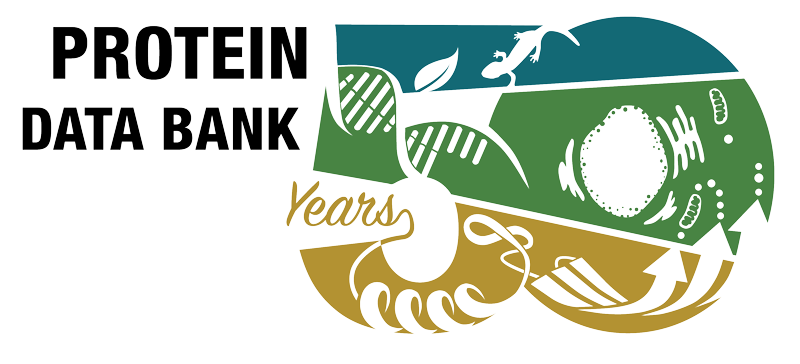Articles - 1qze mentioned but not cited (6)
- Structured States of Disordered Proteins from Genomic Sequences. Toth-Petroczy A, Palmedo P, Ingraham J, Hopf TA, Berger B, Sander C, Marks DS. Cell 167 158-170.e12 (2016)
- Modeling of molecular interaction between apoptin, BCR-Abl and CrkL--an alternative approach to conventional rational drug design. Panigrahi S, Stetefeld J, Jangamreddy JR, Mandal S, Mandal SK, Los M. PLoS One 7 e28395 (2012)
- Binding of HIV-1 Vpr protein to the human homolog of the yeast DNA repair protein RAD23 (hHR23A) requires its xeroderma pigmentosum complementation group C binding (XPCB) domain as well as the ubiquitin-associated 2 (UBA2) domain. Jung J, Byeon IJ, DeLucia M, Koharudin LM, Ahn J, Gronenborn AM. J Biol Chem 289 2577-2588 (2014)
- The dipeptidyl peptidase IV inhibitors vildagliptin and K-579 inhibit a phospholipase C: a case of promiscuous scaffolds in proteins. Chakraborty S, Rendón-Ramírez A, Ásgeirsson B, Dutta M, Ghosh AS, Oda M, Venkatramani R, Rao BJ, Dandekar AM, Goñi FM. F1000Res 2 286 (2013)
- Approximating Projections of Conformational Boltzmann Distributions with AlphaFold2 Predictions: Opportunities and Limitations. Brown BP, Stein RA, Meiler J, Mchaourab HS. J Chem Theory Comput 20 1434-1447 (2024)
- research-article Approximating conformational Boltzmann distributions with AlphaFold2 predictions. Brown BP, Stein RA, Meiler J, Mchaourab H. bioRxiv 2023.08.06.552168 (2023)
Reviews citing this publication (25)
- Ubiquitin-binding domains. Hicke L, Schubert HL, Hill CP. Nat Rev Mol Cell Biol 6 610-621 (2005)
- Delivery of ubiquitinated substrates to protein-unfolding machines. Elsasser S, Finley D. Nat Cell Biol 7 742-749 (2005)
- Proteasome activators. Stadtmueller BM, Hill CP. Mol Cell 41 8-19 (2011)
- Regulated protein turnover: snapshots of the proteasome in action. Bhattacharyya S, Yu H, Mim C, Matouschek A. Nat Rev Mol Cell Biol 15 122-133 (2014)
- Integrating diverse data for structure determination of macromolecular assemblies. Alber F, Förster F, Korkin D, Topf M, Sali A. Annu Rev Biochem 77 443-477 (2008)
- Structural biology of the proteasome. Kish-Trier E, Hill CP. Annu Rev Biophys 42 29-49 (2013)
- Ubiquitin receptors and ERAD: a network of pathways to the proteasome. Raasi S, Wolf DH. Semin Cell Dev Biol 18 780-791 (2007)
- The diversity of ubiquitin recognition: hot spots and varied specificity. Winget JM, Mayor T. Mol Cell 38 627-635 (2010)
- Data-driven docking for the study of biomolecular complexes. van Dijk AD, Boelens R, Bonvin AM. FEBS J 272 293-312 (2005)
- Proteasome regulation of oxidative stress in aging and age-related diseases of the CNS. Ding Q, Dimayuga E, Keller JN. Antioxid Redox Signal 8 163-172 (2006)
- Disordered proteinaceous machines. Fuxreiter M, Tóth-Petróczy Á, Kraut DA, Matouschek A, Lim RY, Xue B, Kurgan L, Uversky VN. Chem Rev 114 6806-6843 (2014)
- Recent advances in segmental isotope labeling of proteins: NMR applications to large proteins and glycoproteins. Skrisovska L, Schubert M, Allain FH. J Biomol NMR 46 51-65 (2010)
- Protein trans-splicing and its use in structural biology: opportunities and limitations. Volkmann G, Iwaï H. Mol Biosyst 6 2110-2121 (2010)
- The Roles of Ubiquitin-Binding Protein Shuttles in the Degradative Fate of Ubiquitinated Proteins in the Ubiquitin-Proteasome System and Autophagy. Zientara-Rytter K, Subramani S. Cells 8 E40 (2019)
- Advances in integrative modeling of biomolecular complexes. Karaca E, Bonvin AM. Methods 59 372-381 (2013)
- Ubiquitin and its binding domains. Randles L, Walters KJ. Front Biosci (Landmark Ed) 17 2140-2157 (2012)
- Proteasomal recognition of ubiquitylated substrates. Fu H, Lin YL, Fatimababy AS. Trends Plant Sci 15 375-386 (2010)
- Proteasome interaction with ubiquitinated substrates: from mechanisms to therapies. Chen X, Htet ZM, López-Alfonzo E, Martin A, Walters KJ. FEBS J 288 5231-5251 (2021)
- Ubiquitin-Modulated Phase Separation of Shuttle Proteins: Does Condensate Formation Promote Protein Degradation? Dao TP, Castañeda CA. Bioessays 42 e2000036 (2020)
- Structural disorder and its role in proteasomal degradation. Aufderheide A, Unverdorben P, Baumeister W, Förster F. FEBS Lett 589 2552-2560 (2015)
- Methods for the purification of ubiquitinated proteins. Tomlinson E, Palaniyappan N, Tooth D, Layfield R. Proteomics 7 1016-1022 (2007)
- Protein ligation: applications in NMR studies of proteins. Iwai H, Züger S. Biotechnol Genet Eng Rev 24 129-145 (2007)
- Proteasome substrate receptors and their therapeutic potential. Osei-Amponsa V, Walters KJ. Trends Biochem Sci 47 950-964 (2022)
- The role of ubiquitin-binding domains in human pathophysiology. Sokratous K, Hadjisavvas A, Diamandis EP, Kyriacou K. Crit Rev Clin Lab Sci 51 280-290 (2014)
- Every protagonist has a sidekick: Structural aspects of human xeroderma pigmentosum-binding proteins in nucleotide excision repair. Feltes BC. Protein Sci 30 2187-2205 (2021)



 PMID:
PMID: 